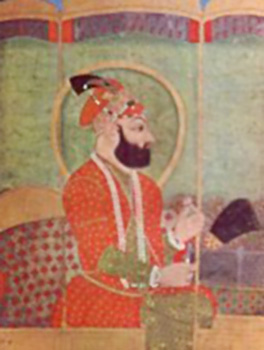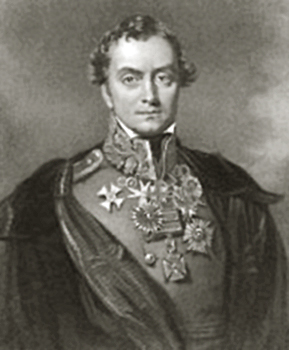 Battle of Feroz Shah was fought in the state of Punjab on 21st December and 22nd December, 1845. This battle was fought between the Sikhs and the British forces. In this historic battle, British forces were led by Governor-General Sir Henry Hardinge and Sir Hugh Gough and Sikh army was led by Lal Singh. In this battle, British forces emerged as victorious. Battle of Feroz Shah is considered to be the one of the hardest-fought battle in the history of British army.
Battle of Feroz Shah was fought in the state of Punjab on 21st December and 22nd December, 1845. This battle was fought between the Sikhs and the British forces. In this historic battle, British forces were led by Governor-General Sir Henry Hardinge and Sir Hugh Gough and Sikh army was led by Lal Singh. In this battle, British forces emerged as victorious. Battle of Feroz Shah is considered to be the one of the hardest-fought battle in the history of British army.
Advancements of British and Sikhs before the Battle of Feroz Shah
The main body of the Sikh army took up positions at Feroz Shah ten miles from Mudki and the routed divisions joined them up. Defences had been hastily prepared but were not complete by the time the English advanced and threatened them on the morning of 21st December. Their plan of attack was to affect a junction with General Litter`s column from Firozpur and then attack with the combined force. Their army now numbered 16,000 in all while the Sikhs had 30,000 men and horses (ten to twelve thousand cavalry) with 80 guns. With their heavy guns the Sikh artillery was superior to the English. General Litter managed to escape from Firozpur with his whole column intact and affected a junction with the main army. Deployment took the British forces some more time and the battle did not start until late in the evening. A cavalry brigade each was posted on the flanks.
First and Second Day of Battle of Feroz Shah
 The battle of Feroz Shah began with an artillery duel within an hour of sunset. As per plans General Litter attacked the west side of the Sikh position. In the first day of the battle, with the accurate artillery fire the Sikhs managed to break the English attacks. Litter was forced to withdraw with heavy losses. Meanwhile Wallace was more successful on the left of the centre of the positions and managed to affect a slight break in the Sikh lines. Further on the right Gilbert, though successful in the beginning, was halted in the face of strong musket fire from the Khalsa infantry. At this time, when the first attacks had failed or halted reserves under General Smith were brought forward. This column managed to push right into the centre of the Sikh defensive positions. The approach of darkness coupled with the fine resistance put up by the Sikhs, caused much confusion. The fighting continued in the dark for some time until the English were ordered to retire and take up positions outside the Sikh lines.
The battle of Feroz Shah began with an artillery duel within an hour of sunset. As per plans General Litter attacked the west side of the Sikh position. In the first day of the battle, with the accurate artillery fire the Sikhs managed to break the English attacks. Litter was forced to withdraw with heavy losses. Meanwhile Wallace was more successful on the left of the centre of the positions and managed to affect a slight break in the Sikh lines. Further on the right Gilbert, though successful in the beginning, was halted in the face of strong musket fire from the Khalsa infantry. At this time, when the first attacks had failed or halted reserves under General Smith were brought forward. This column managed to push right into the centre of the Sikh defensive positions. The approach of darkness coupled with the fine resistance put up by the Sikhs, caused much confusion. The fighting continued in the dark for some time until the English were ordered to retire and take up positions outside the Sikh lines.
The Sikhs had succeeded in so far as they had managed to repulse the English attack with heavy losses and thrown their army in great disorder. The whole English force had been committed to battle and no fresh reserves were left. The Sikhs on the other hand had near about 11,000 fresh troops near Firozpur. Sporadic fighting continued during the night when both Gilbert and Smith, who had gained entry in the Sikh defensive positions, were forced to retire much behind their original positions. There was indecision and confusion in the English camp. On the other side the counsels of the Sikhs were divided. During that crucial period at night unity disappeared. There was no unity in the Sikh camp and commanders at all levels acted with selfish motives. There was no central direction to control and supervise the operations.
The English again renewed the attack on the second day (December 22) and met with very little resistance. Meanwhile General Tej Singh arrived with his army and horses. He waited until Raja Lai Singh`s force was pushed out of Feroz Shah and then skirmished with the enemy half heartedly. They were already tired and had no ammunition for their heavy guns. A part of their force was at that time already retiring towards Firozpur. At the time when his column was committed with the English, General Tej Singh left the battle field with no definite orders or plans for his subordinate commanders. His men, therefore, followed him soon after. The Sikhs crossed the Sutlej River at ease as the English did not pursue. Even though the English had won the battle of Feroz Shah not very decisive though, they had suffered heavy casualties. This victory of the British forces, however, did not add to the prestige of the English. The beaten Sikh army built up its defences on the other side of River Sutlej.



















